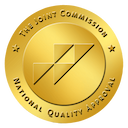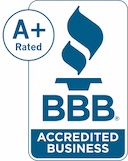Orlando Metro Drug Habits & Addiction Treatment Services
With the right combination of treatment and therapy, Recovery First Treatment Center can help you work towards a life in recovery.
The path to addiction recovery can appear daunting at first, but with the right mindset, treatment, and support, it is absolutely possible. Millions of people who have struggled with substance use disorders are currently living fulfilling lives in recovery. Read on to learn about substance abuse in the Orlando region and the resources nearby for addiction treatment.

Substance Misuse Statistics in Orlando, FL
15% of the city’s population is below the poverty level.1 Located in central Florida, Orlando is in Orange County, and it is in an at-risk area for drug trafficking and smuggling. The United States Department of Justice (DOJ) places Orlando inside the Central Florida High Intensity Drug Trafficking Area (HIDTA), which includes the counties of Orange, Seminole, Osceola, Polk, Volusia, Pinellas, and Hillsborough.2 Orlando may be a shipment hub for cash and drugs, especially marijuana coming from Mexico.3 Controlled prescription drug trafficking, diversion, and abuse, as well as cocaine use, are also concerns in this region of Central Florida.4
With an influx of drugs to the state comes drug use, dependence, and addiction. Within Florida, an estimated 10.5% of adults 18 and older are considered current drug users, according to a 2016 survey by the Substance Abuse and Mental Health Services Administration (SAMHSA). While this is similar to the national drug use average, the drug overdose rate for Floridians is higher than the rest of the country. In 2021, 106,000 people in the United States died as the result of a drug overdose; 8,163 of those were Florida residents, according to a report from the Centers for Disease Control and Prevention (CDC)
Addiction is another potential side effect to drug use, and it often co-occurs with mental illness as well. In Orange County, an estimated 3.99% of the adult population lived with a serious mental illness (SMI).8 Mental health and substance use disorders both fall into the category of behavioral health, and both conditions are highly treatable with the proper type and level of care, such as you can find in outpatient addiction treatment in Orlando, FL.
The Rise and Fall of Pill Mills
Opioid pain pills like OxyContin (oxycodone) and Vicodin (hydrocodone) effectively block pain sensors in the brain. Perhaps an unintended consequence, they also activate the reward and pleasure centers by increasing dopamine levels. When misused, a rush of euphoria, or “high,” occurs, thereby increasing the abuse potential of these drugs. As the demand for these drugs rose, retail “x pill mill” outlets began springing up all over Florida. Due to its easy access to the rest of the country, Orlando became a hub for the diversion of controlled prescription drugs (CPDs).
In 2009, the Orlando Metropolitan Bureau of Investigation (MBI) reported a big jump of CPD-related investigations since 2007, from 10% to 70% of their cases.9 In 2011, there were over 850 pain clinics and only seven of the top 100 oxycodone prescribing doctors in the US were not located in Florida in 2010.10 In 2021, there were 681,164 opioid prescriptions dispensed in Orange County alone, according to data collected by FLHealthCharts.gov.
Prescription drug overdose deaths continue to plague Floridians. In 2021, 4740 people died with one or more prescription drugs in their system. Some of these deaths were also related to the misuse of prescription benzodiazepines, or sedatives and tranquilizers. In Orlando alone, prescription overdose deaths included:
- Alprazolam (Xanax) — 29 overdose deaths.
- Clonazepam (Klonopin) — 25 overdose deaths.
- Oxycodone —12 overdose deaths.
- Hydrocodone — 16 overdose deaths.
- Morphine — 43 overdose deaths.
The state government enacted the Florida Prescription Drug Monitoring Program (PDMP) to better control the epidemic and keep track of these controlled substances. Local law enforcement paired with the Drug Enforcement Administration (DEA) to crack down on these pill mills and doctors engaging in CPD diversion.13 Perhaps as a direct result, prescription drug overdose fatalities fell over 17 percent from 2010 to 2012 and the number continues to decline.14
While there has been a significant decrease in the number of deaths involving prescription medication overdoses, there is still a need for effective treatment for people struggling with addiction to prescription medications. Fortunately, prescription drug rehabs in Orlando offer evidence-based care to help people get on the road to recovery.
New Drugs Appear on the Scene
Synthetic drugs are rising in popularity. This category includes both synthetic, or man-made, cannabinoids and cathinones. Synthetic cannabinoids have extremely high and potent levels of THC, or tetrahydrocannabinol, the active ingredient in marijuana. Often marketed in smoke shops as incense, these synthetic drugs include Spice, K2, and a hash oil or wax called Budder. These drugs are highly dangerous. Individuals may never be exactly sure how their bodies will react to even one dose of the drug. Poison Information Centers received 524 calls related to synthetic cannabinoids in 2022.18
Other synthetic drugs that are usually made in illegal laboratories around the state include methamphetamine, MDMA (ecstasy), and an equivalent called Molly. Molly may be heralded and marketed underground as pure MDMA, a stimulant, but it is usually cut with a variety of other agents and may have many different fillers in the tablets. In Central Florida, Molly may be imported and shipped from China, and it is popular in the local club scene.19 Molly can increase body temperature and heart rate to dangerous levels as well as cause confusion and an altered state of mind.
Incidents involving the stimulant drug methamphetamine, or meth for short, increased in the first half of 2014 over the first half of 2013 almost 35 percent, although overall meth cases only represented a small percentage of the abused drugs in Florida.20 Despite the decrease in overall use, methamphetamine use resulted in 66 overdose deaths in Orlando in 2021, according to the Florida ME’s office.
A relatively new drug Alpha-PVP also called flakka or gravel, is also making its way onto the streets of Florida. The popularity of this mind-altering drug seems to be increasing within the Sunshine State. A designer drug that comes in crystal form and can be smoked, snorted, swallowed, injected, or vaped in an e-cigarette, flakka is similar in context to other stimulant drugs labeled bath salts, which are synthetic cathinones. This particular designer drug can cause drastic hallucinations, delusions, mood swings, and high temperature spikes when taken. There were 670 reported cases around the country in 2014, with many of those reports coming from Florida.21
Dangerous Drugs Commonly Abused in Orange County
In 2018, according to a report by the Substance Abuse and Mental Health Services Administration (SAMHSA) an estimated 1.8 million people in Florida needed substance use disorder treatment, but only 447,000 received it. Meaning an additional 75% could have benefited from treatment for substance use disorders. In 2021, approximately 2983 people were admitted to a substance use disorder treatment program in Orange County, FL22
Within Central Florida, substance use disorder treatment admissions, including those for Orlando drug treatment, listing the primary substance of abuse and the number of individuals for each substance during 2018 were as follows:
- Marijuana use — 855 people.
- Prescription opioid use — 1376 people.
- Heroin use — 1763 people.
- Methamphetamine use — 104 people.
Alcohol is cheap, legal to those over the age of 21, and easy to find. Alcohol dependency and misuse issues may be compounded by mental health disorders, history of addiction, and the use of other drugs as well. Across the entire country, alcohol is the most frequently used addictive substance, and one in every 12 adults may be battling alcohol dependence or addiction.27 Fortunately there is effect alcohol treatment in Orlando for those struggling.
Cocaine has long been a scourge in Central Florida, and in 2011, out of the 30 law enforcement regions in the area, 11 of them listed cocaine as the number one drug threat in their jurisdiction.28 Interstate-4, which runs through Orlando, may be frequently used for trafficking illicit drugs in private and commercial vehicles through the state and beyond into the rest of the country.
Causes of Youth Drug Use
Young people are particularly vulnerable to risk factors that can lead to substance use disorders — and this is true for Florida, as well as across the nation. Risk factors for drug and alcohol use among young people include:
- Family history of addiction.
- Poor parental monitoring and permissive attitudes toward substance use.
- Rejection of sexual orientation or gender identity.
- Peer pressure.
- Disruptive or traumatic experiences, such as sexual trauma or violence in the home.
- Mental health issues.
According to the 2022 Monitoring the Future Survey, rates of substance use among youth are still at alarming rates.
Alcohol
- 23% of surveyed 8th graders reported alcohol use.
- 41% of surveyed 10th graders reported alcohol use.
- 61.6% of surveyed 12th graders reported alcohol use.
Any Illicit Drug Use
- 17% of surveyed 8th graders reported prescription drug use.
- 28% of surveyed 10th graders reported prescription drug use.
- 41% of surveyed 12th graders reported prescription drug use.
Marijuana
- 11% of surveyed 8th graders reported marijuana use.
- 24% of surveyed 10th graders reported marijuana use.
- 41% of surveyed 12th graders reported marijuana use.
- 0.8% of surveyed 8th graders reported cocaine use.
- 0.8% of surveyed 10th graders reported cocaine use.
- 2.4% of surveyed 12th graders reported cocaine use.
- 3% of surveyed 8th graders reported amphetamine use.
- 3% of surveyed 10th graders reported amphetamine use.
- 3% of surveyed 12th graders reported amphetamine use.

Are You Struggling With Addiction?

Finding Help for Addiction Near Orlando, FL
Orange County Behavioral Health Services
According to the Coalition for the Homeless of Central Florida, in 2018, there were 2053 homeless men, women, and children on a single night in Orange and adjacent Seminole Counties. According to Orange County Public Schools, during the 2022-2021 school year, nearly 9700 children experienced homeless during the academic year.
These individuals, adults and children alike, may not generally have access to the same levels of care as others and may suffer from substance abuse and mental illnesses without the proper treatment. The Health Care Center for the Homeless (HCCH) seeks to change that and operates both a clinic and a mobile care unit offering medical and mental health services to the homeless population of the greater Orlando metro area, serving those in need in Orange, Seminole, and Osceola Counties.32
Suicide may be a real risk factor for those battling mental illness. In 2020, in Florida, over 3000 people lost their lives to Suicide according to data gathered by FLHealthCharts.gov. Of those, 132 were in Orange County.
Untreated mental illness and substance abuse or dependency issues may not only carry substantial health risks, but also may be linked to the potential to commit crimes. About 30 percent of the inmates in Orange County, for example, may suffer from mental illness.34 Florida is second to last in the country when it comes to state funding for the most basic mental health services.35 Public mental health services in Florida serve only a fraction more than a quarter of the population battling serious mental illness within the state. Often, individuals may need to seek out other options such as private facilities in order to obtain the level of care required.36
Military veterans have the option of utilizing a Veterans Affairs (VA) hospital. The Orlando VA Medical Center provides a host of medical and mental health services, including those involving substance abuse, for military veterans.37 Florida residents may use the search tool on the Florida Department of Children and Families (DCF) website to locate local providers of behavioral health services as well as those who meet the Substance Abuse and Mental Health Service’s (SAMHSA’s) qualifications.3839
Most private mental health and substance use disorder treatment facilities have professionals on staff who can help identify methods of funding for treatment and help to determine what insurance companies may pay to aid in offsetting costs. Private facilities have the benefit of providing high levels of individualized and comprehensive care suited to each unique person. Both private and public behavioral health programs may offer a wide range of services, from inpatient care, medical detox, and crisis management to outpatient care, prevention efforts, ongoing support, family education, and recovery care.
Getting Drug and Alcohol Addiction Treatment in Orlando
Central Florida in general, and Orlando in particular, struggles with being a center for illegal drug importing, which means there is also ongoing substance use issues. Fortunately, there are options from city, state, and nonprofit agencies to address the issue.
Florida Health, the state’s health and human services department, provides a list of online resources for mental and behavioral issues, including substance abuse. Florida’s Department of Children and Families (DCF) also keeps a lengthy list, with the help of the Florida Association of Recovery Residencies (FARR), of high-quality, certified treatment programs across the state, by county. Search Orange County, and there are dozens of results for drug and alcohol treatment programs available.
The Sunshine State is home to many military bases and veterans who resettled there after tours of duty. The Department of Veterans Affairs (VA) offers benefits to veterans, including mental and behavioral treatment programs to overcome substance abuse. Some of these programs are conveniently located for Orlando residents.
The Florida Alcohol & Drug Abuse Association (FADAA) maintains a list of resources for those struggling with substance abuse and their families. Another nonprofit, the Florida Safety Council, also has a list of treatment providers across Orange County who offer mental and behavioral health counseling.
The Substance Abuse and Mental Health Services Administration (SAMHSA) is a federal organization that maintains a high-quality database of mental and behavioral services. These can be searched by location through their online treatment locator; people in crisis can also call their hotline and receive referrals for help immediately. The Psychology Today website also maintains a lengthy, easy-to-search list of treatment providers. In Orlando, search options can be narrowed down by detox and rehab, type of drug rehabilitation, length of stay, and more.
Finally, for those in Orlando who need low cost or free treatment, the Salvation Army has an adult rehabilitation program.
More About Orlando Drug Treatment
Our Stats
Learn MoreWhat Makes Us Unique
Industry Accredited, Exceptional Care
We’ve Supported Thousands With Their Recovery
American Addiction Centers (AAC) is committed to delivering original, truthful, accurate, unbiased, and medically current information. We strive to create content that is clear, concise, and easy to understand.
While we are unable to respond to your feedback directly, we'll use this information to improve our online help.



